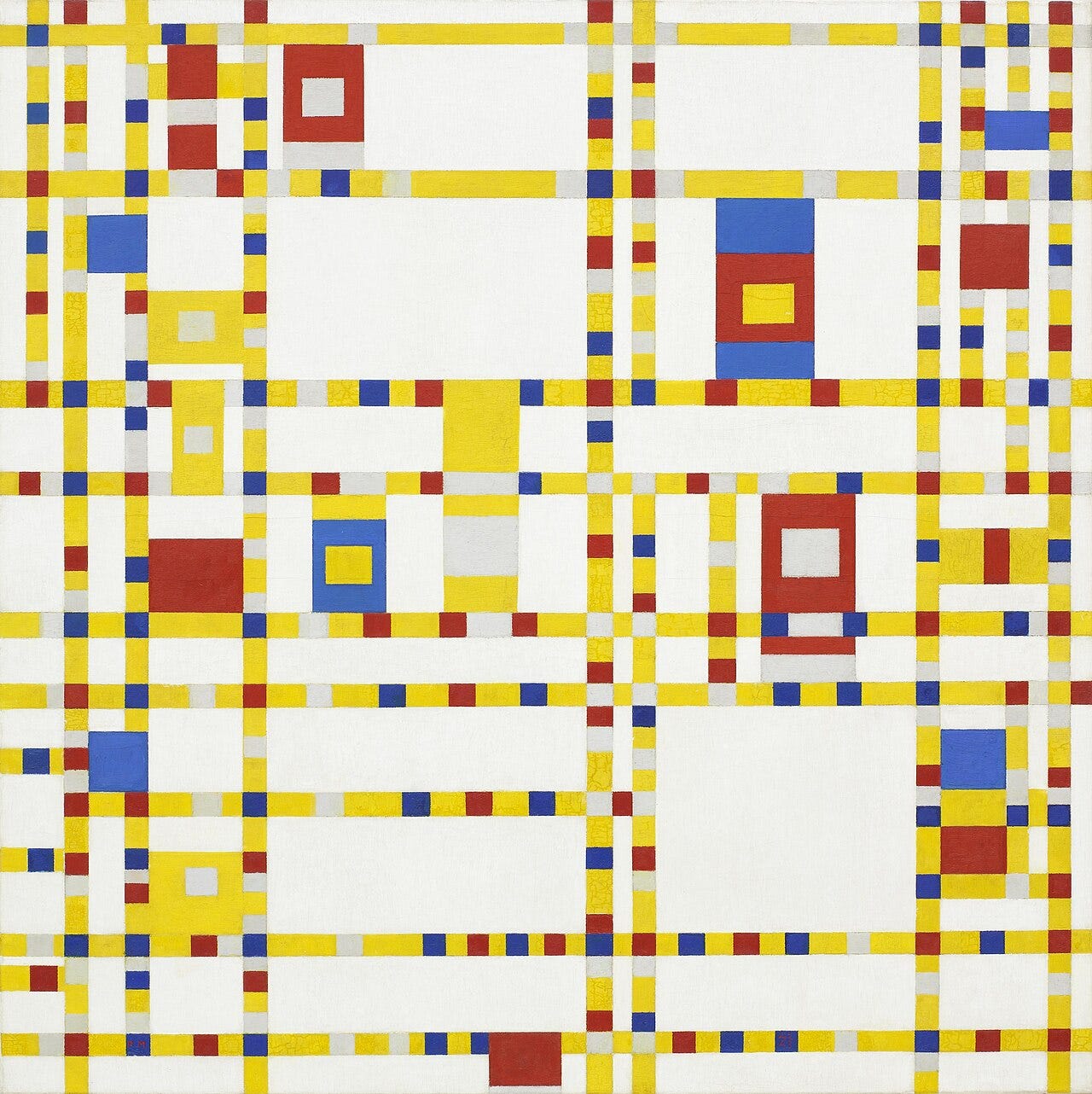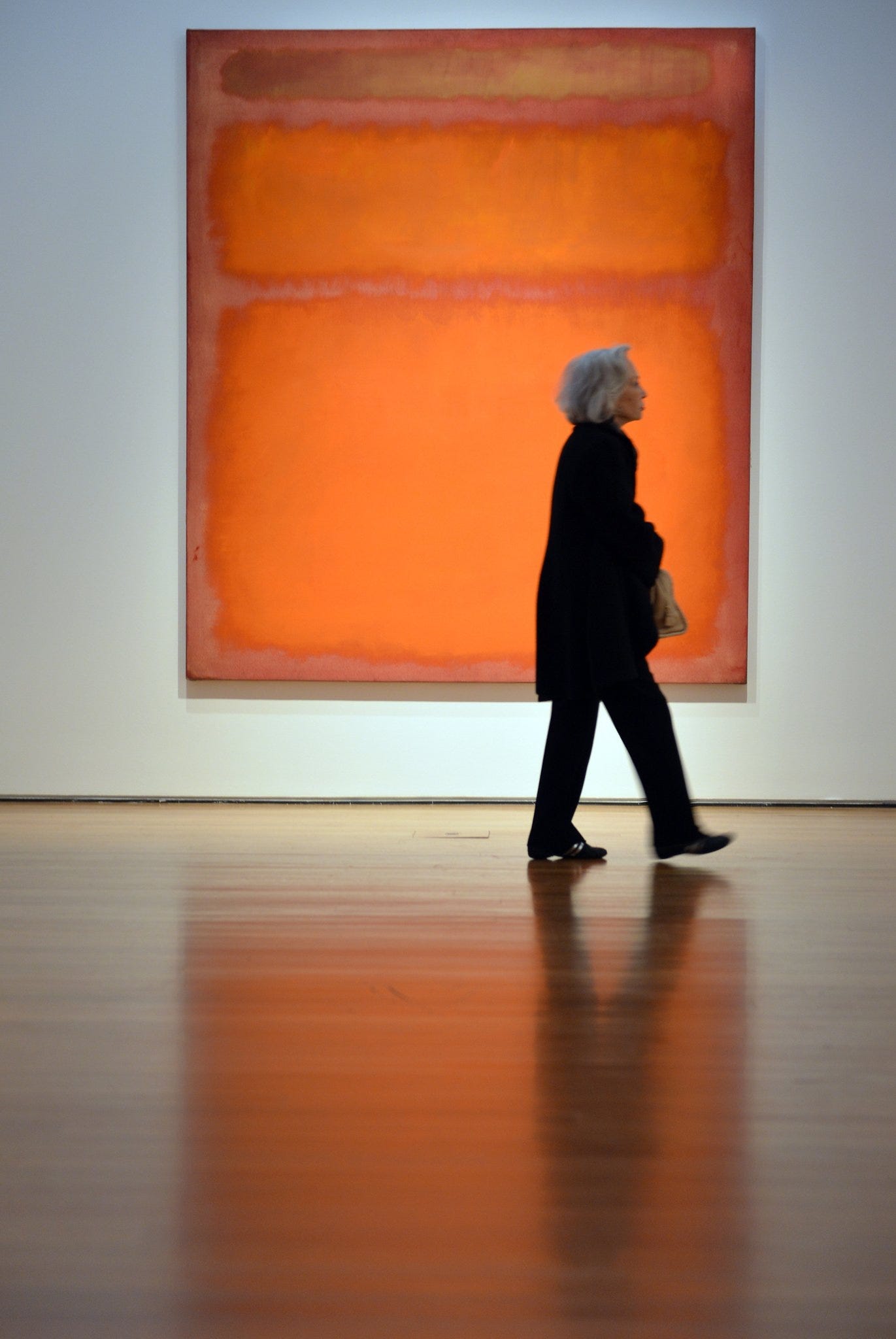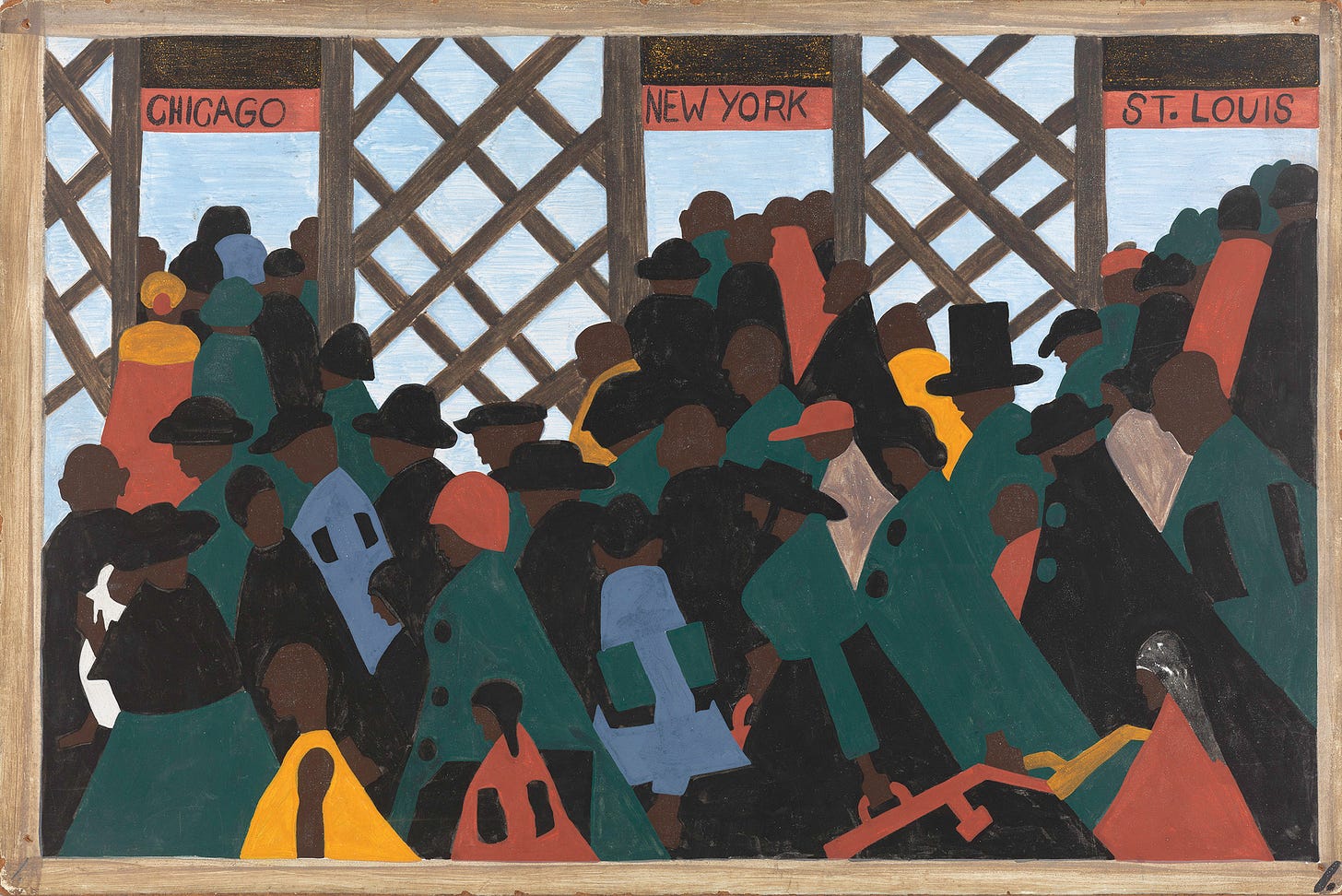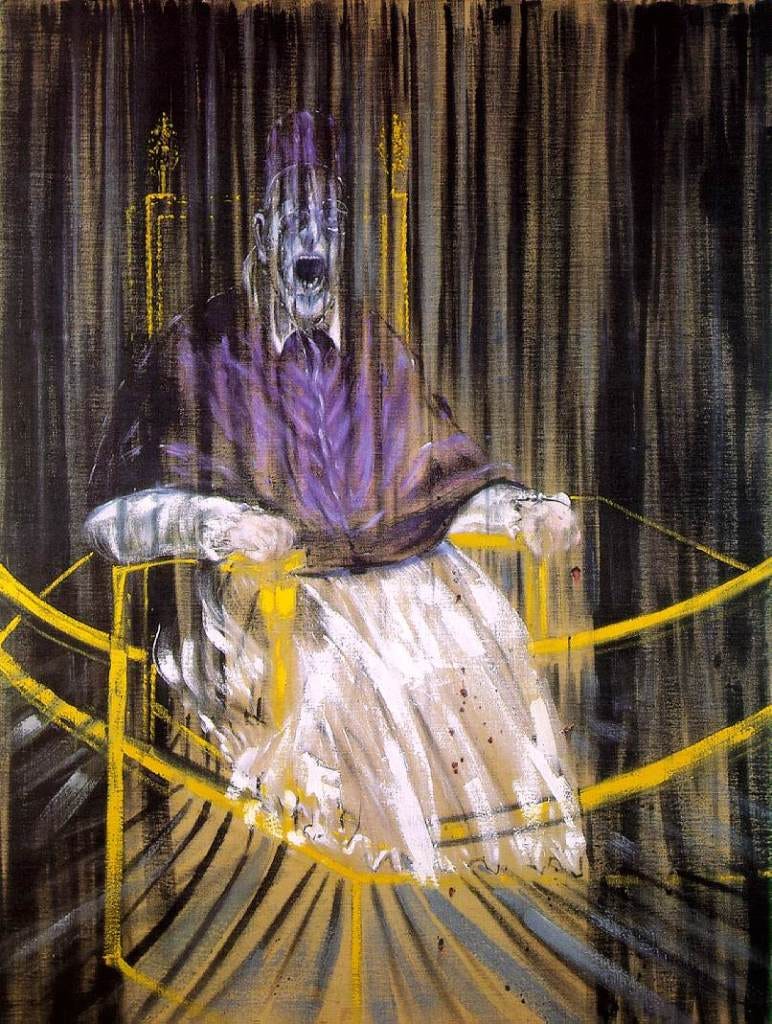Popular Songs and Their Equivalent Works of Art
An exercise invented over a drink with a scholar.
For Joe Provenzano, and Dean, because Joe knows Dean, and so do I.
This began, as many great things do, in a bar. Okay, the bar inside a restaurant on the campus of the University of Michigan. The conversation turned to music as it often does with me and my friends. We waxed (shouted) poetically about how the modern musician doesn’t study art (by which we meant painters). Then we tried to poke holes in that theory (because academics love to set traps for themselves and then celebrate themselves when they sidestep those traps). I left the restaurant (bar) and got to thinking (and listening), as is my custom.
After much internal debate, headphone ear hole sweat, and other scholarly struggles, I think I’ve hit my target of finding pieces of art that work as visual representations of a song. The premise is clearly flawed, and unless we have first-hand confirmation of what pieces of art a musician or band drew inspiration from, then this is entirely a speculative exercise (and even then, they could be lying just for the fun of it), but that’s entirely what makes it so damn fun.
What’s more (and there’s always more), there’s much (too much) scholarly debate about the intent of the artist and the interpretation of the viewer (or listener). We’re not making gunpowder (an exact science), we’re speculating.
Brian Eno – An Ending (Ascent)
Resembles: James Turrell’s Skyspaces
Gravity loses its grip here. Eno’s ambient textures dissolve the walls, letting light and air pour in. Music becomes architecture and atmosphere. Turrell’s Skyspaces invite you to gaze upward, to lose yourself in color and space, while Eno’s composition does the same for the ears. Notes drift and hover, time slows, and you remain suspended in a meditative hush, a cathedral of air and light.
Kate Bush – An Architect’s Dream
Resembles: Giorgio de Chirico’s The Melancholy of Departure
Here, surrealism breathes in sound. Bush sketches a landscape of longing, her piano echoing through empty piazzas where shadows stretch impossibly long. De Chirico’s metaphysical cities remain still and uncanny, filled with the ache of absence. Bush’s song serves as their soundtrack, a journey through dream corridors and memory’s echo chambers. Every note forms a question mark, every lyric leaves a door ajar.
The Weakerthans – Sun in an Empty Room
Resembles: Edward Hopper’s Sun in an Empty Room
Silence transforms into gold. The arrangement stays sparse, sunlight pouring through musical windows onto bare floors. Hopper’s painting focuses on what remains absent, the ghosts of moments, the hush of aftermath. The Weakerthans capture that hush, their melody lingering in the air like dust motes, their lyrics tracing the outlines of absence and memory. Here, melancholy offers comfort, emptiness becomes invitation.
Fleetwood Mac – Rhiannon
Resembles: John William Waterhouse’s The Lady of Shalott
Mysticism rides the moors. Rhiannon floats on a gossamer melody, all shimmer and spell, conjuring Waterhouse’s tragic lady adrift on her boat. The song feels like wind in the willows, a voice calling from across the mist, ethereal and doomed. Stevie Nicks’ vocals evoke a pre-Raphaelite spirit, lush and romantic, haunted by myth, painting a world where love means both enchantment and exile.
David Bowie – Sound and Vision
Resembles: Wassily Kandinsky’s Composition VIII
Step into the blue room: Sound and Vision becomes a sonic geometry, a Bauhaus daydream where synths flicker like colored shards on canvas. Bowie sings in a way that paints with sound, splattering primary tones over a rhythm grid, letting each note become a brushstroke in Kandinsky’s abstract universe. You do not simply listen; you see. It becomes a synesthetic explosion, a dance of shapes and hues, as if the song itself were a gallery you could walk through, humming with electricity and possibility.
King Crimson – The Night Watch
Resembles: Rembrandt’s The Night Watch
Baroque grandeur meets prog rock spectacle. King Crimson’s opus creates a chiaroscuro of sound, dramatic and sprawling, illuminated by flashes of virtuosity. Rembrandt’s masterpiece teems with life, tension, and shadow. Crimson’s song unfolds with equal drama, its narrative sweeping through darkness and light. Each instrument steps forward as a character, each passage becomes a scene, the whole thing transforms into a living tableau of ambition and intrigue.
Radiohead – Everything In Its Right Place
Resembles: Piet Mondrian’s Broadway Boogie Woogie
This is order as ecstasy, anxiety as architecture. Radiohead’s digital pulse ticks in perfect rectangles, a city of sound mapped in Mondrian’s yellow, red, and blue. Every synth stab resembles a taxi cab on a New York grid, every loop a block, every Thom Yorke sigh a hidden alley. Music transforms into a blueprint, the chaos of emotion tamed into minimalist perfection, where every element, no matter how alienated, finds its proper place in the composition.
Kanye West – Runaway
Resembles: Mark Rothko’s Orange, Red, Yellow
Minimalism becomes confession. The piano plinks, lonely and exposed, like Rothko’s color fields: vast, aching, vibrating with feeling. West’s voice drags across the canvas like a raw brush, each lyric a layer of pigment, each silence a void. The song works less as a narrative than as a meditation, inviting you to stand before it and feel the weight of regret, the shimmer of hope, and the infinite gradations between.
Janelle Monáe – Tightrope
Resembles: Jacob Lawrence’s The Migration Series
Monáe struts the line, feet never touching the ground, her groove a kinetic mural. Lawrence’s panels pulse with the hope and hustle of movement, and so does this song: syncopated, narrative, alive with the urgency of journey and change. Brass blares like sunlight on painted faces, the beat becomes a train engine, relentless, carrying stories from South to North, past to future. Funk transforms into history, choreography into testimony.
Billie Eilish – bury a friend
Resembles: Francis Bacon’s Study after Velázquez’s Portrait of Pope Innocent X
This is pure nightmare fuel. The production features jagged edges and guttural groans, as if the song itself were a figure screaming behind glass. Eilish whispers from the void, her voice distorted and twisted, echoing Bacon’s tormented pope rendered in 808s and reverb. The result is a portrait of anxiety and beauty corrupted, where every sound becomes a brushstroke of dread, every beat a pulse of existential terror.
To listen is to see, to see is to listen. In these pairings, the boundaries between ear and eye dissolve. The gallery turns into a concert hall, the record becomes a canvas.













As an art history minor once upon a time and music lover, I agree with all of your choices and particularly love what you chose for Fleetwood Mac and Radiohead
Very cool